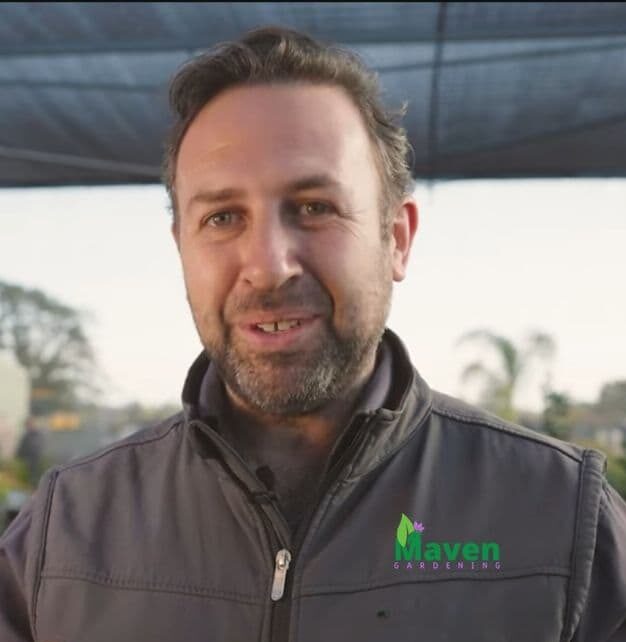Nutrient Film Techniques: Sustainable Gardening with NFT System
What if I told you that gardening’s future doesn’t involve dirt? It’s not science fiction; it’s Nutrient Film Technique (NFT) hydroponics. This cutting-edge system is changing the way we grow food, one water-efficient harvest at a time.
Professional growers and hobbyist gardeners embrace NFT for its ability to produce impressive yields while conserving resources. Join us on this green journey to discover how NFT systems can transform your garden and put fresh, homegrown food on your table year-round.
Nutrient Film Technique Definition
NFT systems constantly flow nutrient-rich water over plants’ roots, nourishing them. Unlike traditional gardening, the Nutrient Film Technique doesn’t require soil. Instead, plants are suspended in channels or trays, allowing their roots to hang freely and absorb nutrients directly from the water. This method ensures optimal nutrient delivery, leading to faster growth and higher yields.
Why Choose NFT Systems?
Simplicity: NFT systems are relatively easy to set up and maintain, making them ideal for both professional growers and gardening enthusiasts.
Efficiency: NFT maximizes water and nutrient usage, minimizing waste and promoting sustainable practices.
High Yields: By providing plants with a constant supply of nutrients and oxygen, NFT systems often result in significantly higher yields than traditional gardening.
Versatility: NFT is suitable for a wide range of plants, including leafy greens, herbs, and even fruiting crops.
Key Components of an NFT Hydroponic System
Nutrient Reservoir: The heart of the NFT system, storing the nutrient solution that feeds your plants.
Water Pump: Circulates the nutrient solution from the reservoir to the plant channels, ensuring continuous flow.
Channels or Trays: These provide a home for your plants, allowing their roots to hang in the nutrient film while supporting the upper portion.
Return Pipes: These pipes collect unused nutrient solutions and return them to the reservoir, thus reducing waste and maximizing resource efficiency.
Pros of NFT Systems:
- Water Efficiency: NFT systems use significantly less water than traditional soil-based gardening, making them an environmentally friendly choice.
- Nutrient Efficiency: Precise nutrient delivery ensures plants receive the exact amount they need, minimizing waste and reducing fertilizer costs.
- Faster Growth and Higher Yields: Roots receive constant nutrition and oxygen, resulting in rapid growth and higher yields.
- Space Optimization: NFT systems can easily be positioned vertically, making them ideal for small spaces and urban environments.
- Reduced Pest and Disease Pressure: Without soil, pests and diseases are less likely to spread.
- Versatility: Vegetables, herbs, and even fruit can be grown with NFT systems.
Cons of NFT Hydroponics:
- Initial Investment: The NFT system requires pumps, reservoirs, and other components, which makes it more expensive than traditional gardening.
- Technical Knowledge: Installing and maintaining NFT requires some knowledge of hydroponics and plumbing.
- Vulnerability to Power Outages: Since the Nutrient Film Technique relies on pumps for water circulation, power outages can cause rapid plant damage.
- Sensitivity to pH and Nutrient Imbalances: Plant health requires careful monitoring and adjustment of pH and nutrient levels.
- Limited to Certain Plants: NFT may not work for all plants, especially those with large roots or specific soil requirements.
Overall, NFT hydroponics offers a viable alternative to traditional gardening, especially for those seeking efficiency, sustainability, and high yields. However, before selecting NFT, you need to weigh the initial investment and technical requirements against the numerous benefits.
Setting Up Your NFT Hydroponic System: A Beginner-Friendly Guide
With the right guidance, building your own NFT hydroponic system is simple. Here are the steps to start:
- Choose the Ideal Location:
- Sunlight or Grow Lights: Choose a location with ample sunlight or where you can easily install LED grow lights to provide sufficient light.
- Stability and Accessibility: Choose an area that is stable and easily accessible.
- Gather Your Components:
- Nutrient Reservoir: This is the heart of your system, where you’ll store the nutrient solution.
- Water Pump: For your system size, select a pump with an appropriate flow rate.
- Channels or Trays: These house your plants and allow their roots to dangle in the nutrient film.
- Tubing and Connectors: Use high-quality tubing to connect the various components and prevent leaks.
- Assemble and Position Your Channels:
- Slight Angle: Set your channels at a slight angle (1-2 degrees) to ensure a consistent flow of nutrient solution over the roots.
- Secure Placement: Ensure the channels are securely supported to prevent accidental spills or damage.
- Connect the Water Pump:
- Tubing Connections: Ensure a proper seal at each connection point between the pump and the nutrient reservoir.
- Flow Direction: Ensure the pump is positioned to move the nutrient solution through the channels and back into the reservoir.
- Prime and Test Your System:
- Fill the Reservoir: Add the appropriate nutrients according to the instructions on your chosen nutrient solution.
- Run the System: Turn on the pump and carefully observe the system for leaks or blockages. Adjust the flow rate if necessary.
- Monitor pH and EC: Measure pH and EC (electrical conductivity) to ensure the nutrient solution is within an optimal range.
What crops thrive best in NFT systems?
Nutrient film techniques thrive on certain crops. Here are some ideal choices:
- Lettuce (Bibb and Leaf Types): Lettuce is a top pick for NFT systems due to its rapid growth and suitability for nutrient-rich water films. Other leafy greens, like spinach and broccoli rabe, also perform well.
- Herbs: Basil, cilantro, parsley, and mint are popular in NFT setups. Their compact growth and shallow root systems make them well-suited to this method.
- Cherry Tomatoes and Mini Peppers: These compact fruiting plants thrive in NFT channels. However, avoid larger varieties like beefsteak tomatoes, which have extensive root systems and longer growth cycles.
Comparative Analysis of Other Hydroponic Methods
The NFT system makes hydroponics stand out. But how does it compare to other methods, such as Ebb and Flow or DWC (Deep Water Culture)?
Water Efficiency: NFT uses less water than Ebb and Flow, which makes it suitable for low-water areas.
Ease of Setup: This system can be easier and cheaper to set up than DWC systems, especially for beginners.
Yield: Hydroponic NFT often leads to faster growth rates and higher outputs because nutrients always reach straight to the roots.
Maintaining Your NFT Hydroponic System
Nutrient Solution Management
Nutritional solutions are the lifeblood of hydroponic systems. Here’s how to keep it healthy:
Monitor pH Levels: A pH of 5.5 to 6.5 is suitable. To keep things in balance, use pH-up or pH-down treatments.
Check Nutrient Strength: Use an EC meter to ensure your solution has enough nutrients. As the plant grows, make any necessary changes.
Change the solution Regularly: Refill your tank every two to three weeks to keep nutrients from building up and becoming imbalanced.
System Cleaning and Maintenance
For healthy plants and crops, keep your system clean.
Clean Between Cycles: To remove pathogens, wash everything apart and wash it in a weak bleach solution.
Inspect Regularly: Watch for clogs or general wear and tear in your system to stop problems before they happen.
NFT system mistakes to avoid?
When setting up and maintaining Nutrient Film Technique (NFT) hydroponic systems, here are some common mistakes to avoid:
- Inadequate Slope: Ensure that the channels or trays have a slight slope (usually 1:30) to allow the nutrient solution to flow smoothly over the roots. If the slope is too steep or too shallow, it can lead to uneven nutrient distribution.
- Clogged channels: Regularly clean and check them to prevent blockages. Debris, algae, or mineral buildup can impede nutrient flow and harm plant roots.
- Insufficient Oxygenation: Proper oxygenation is crucial for healthy root growth. Make sure the nutrient film doesn’t drown the roots; they need access to air. Consider using air stones or diffusers to enhance oxygen levels.
- Overcrowding: Avoid planting too densely in NFT systems. If plants are overcrowded, they will compete for nutrients and have a limited space to grow roots. Each plant type has a recommended spacing guideline.
- Inconsistent Nutrient Solution: Maintain a consistent nutrient solution strength (EC) and pH. Fluctuations can stress plants and affect growth. Monitor the situation and adjust as needed.
- Neglecting Water Temperature: Keep the nutrient solution at an optimal temperature (usually around 65-75°F or 18-24°C). Extremely cold or hot water can harm roots and impact nutrient uptake.
- Ignoring Root Health: Regularly inspect roots for signs of disease, rot, or pests. Unhealthy roots can compromise the entire system.
As a final note
NFT hydroponics is a big step forward in our search for sustainable, efficient, and effective farming methods. This innovative method allows gardeners and farmers to get better results from their rooms and resources. It can help plants grow faster and produce more. The NFT system can help you succeed, whether you’re a hobbyist who wants to experiment with a few plants or a business grower who wants to revolutionize your production.
Using the Nutrient Film Technique isn’t just about growing plants; it’s also about living in a way that doesn’t waste water and making fresh, healthy food no matter where you are. You will learn and grow on the way to a greener future, and the NFT will be with you the whole way. Let’s care for our world and plant one nutrient film at a time.
FAQs
What is the Nutrient Film Technique?
Nutrient Film Technique (NFT) is a way to grow plants hydroponically. A shallow stream of water with all the nutrients is pumped back and forth through the plants’ bare roots in a tube that keeps water out.
Can any plant be grown using the NFT hydroponic system?
NFT can be used on many types of plants, but it works best on herbs and leafy greens with small roots. Larger plants or deeper roots might not do well in an NFT setting.
When should I change my NFT system’s nutrient solution?
Every two to three weeks, you should change your nutrient mix. Your plants will get the right blend of nutrients if you watch them and make changes as needed.
What are the main challenges to using an NFT hydroponic system?
Key challenges include:
- Maintaining the correct nutrient balance.
- Preventing system blockages.
- Ensure the roots receive adequate oxygen.
Maintaining and monitoring these systems can help overcome these problems.
How does NFT hydroponics compare to traditional soil gardening?
NFT hydroponics is better than standard soil gardening in several ways. Some of these are better use of water and nutrients, higher outputs in less space, and fewer problems with pests and diseases. However, it requires more technical knowledge and initial setup costs.

Meet Milan Cole, your urban gardening pro!
Milan Cole, chief content writer at Maven Gardening and an urban gardening expert, is passionate about helping city dwellers cultivate their green thumbs. Armed with extensive horticultural knowledge, Milan provides practical advice for overcoming urban gardens’ challenges, like limited space, water scarcity, and reduced sunlight.
His expertise extends beyond traditional methods, encompassing innovative approaches like hydroponic and aquaponic systems and sustainable gardening practices. Milan skillfully adapts these techniques to urban environments, considering factors like pollution and climate change.
In his clear and concise writing, Milan offers actionable solutions for anyone wanting to bring life to an urban space. He shares valuable insights into growing herbs in tight spaces, maximizing the potential of window boxes, and transforming even the most miniature balconies into thriving green oases.
Milan’s guidance is straightforward and practical, making it ideal for anyone looking to cultivate their own urban garden, regardless of prior experience.
Join Milan Cole on your journey to metropolitan Eden!




